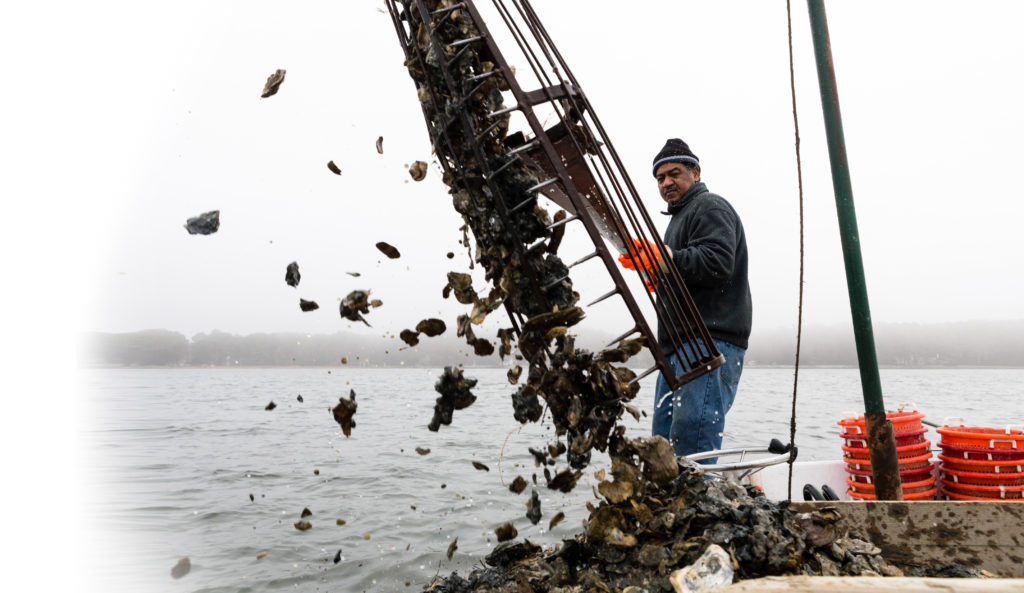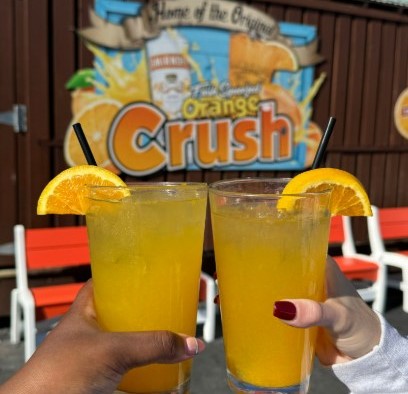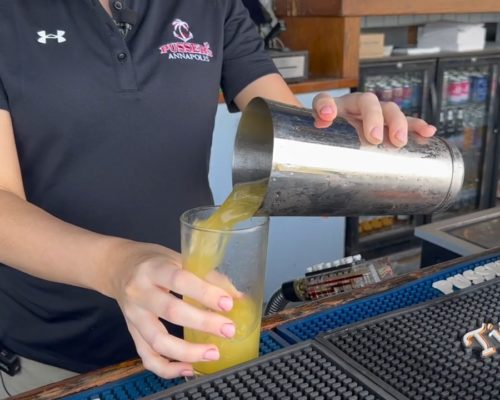(You can do it, too)
Few images evoke the history and culture of the Chesapeake Bay more than a waterman standing on the washboard of a small boat, harvesting oysters with a set of long-shafted tongs. Independent, self-reliant and, if pushed, willing to fight to protect their way of life, hand tongers were the Bay’s version of the cowboys of the American West.
Fleets of locally made log canoes sailing into the Bay for a day of tonging have gone the way of the great cattle drives. Disease, parasites and overharvesting have cut oyster populations in the Bay to a small fraction of their historic highs. More efficient means of gathering the remaining oysters have largely replaced commercial hand tonging.
But recreational tonging remains the ideal way to gather enough fresh, wild oysters for a hearty feast or two. Just as in the Golden Age of Oystering in the Chesapeake (roughly 1870 to 1920), all you need to tong a mess of oysters today is a small boat, a pair of tongs and an oyster bar, known around here as a rock.
Both Virginia and Maryland have an open season for recreational oystering. No license is required, with the caveat that oysters can only be taken by hand tonging or gathering by hand from open rocks. Maryland allows state residents to gather 100 oysters a day; Virginia permits a daily catch of a bushel. Additional rules apply, so be sure to check the state websites before dropping tongs into the water.
If tonging seems daunting, I am living proof you can do it. I was introduced to hand tonging for oysters over a decade ago when two men whose families landed on the Eastern Shore of Virginia in the early 1600s invited me to “go get some Christmas oysters.”
We motored out of a small fishing village on a bright, very cold winter morning. The captain cut the engine at a place that did not look that special to me. We drifted. His friend hauled out a pair of rusty oyster tongs with long wooden handles and dropped the end with the metal baskets overboard. He tapped them gently against the bottom, testing.
Kicht, kicht. I heard metal scrape against oyster shells. He spread the tong handles apart and began to open and close them while churning them up and down against the bottom. He gradually closed the tongs, hauled them up hand over hand, and dumped the contents into a platform on the boat. A mass of muddy shells.
He looked at me over his shoulder as he dropped the tongs back into the water to make another lick. “Grab that hammer,” he said. “Separate the big oysters from the little ones and empty shells—eatin’ oysters in the basket, everything else goes overboard.” That was my introduction to culling oysters.
A few frigid hours later we went home with almost two bushels of tonged wild oysters, an unimaginable bounty for a guy who was used to paying at least $25 for a dozen on the half shell. That evening, as my wife and I stuffed ourselves on scores of raw oysters, I resolved to get my own pair of tongs and gather oysters for myself.
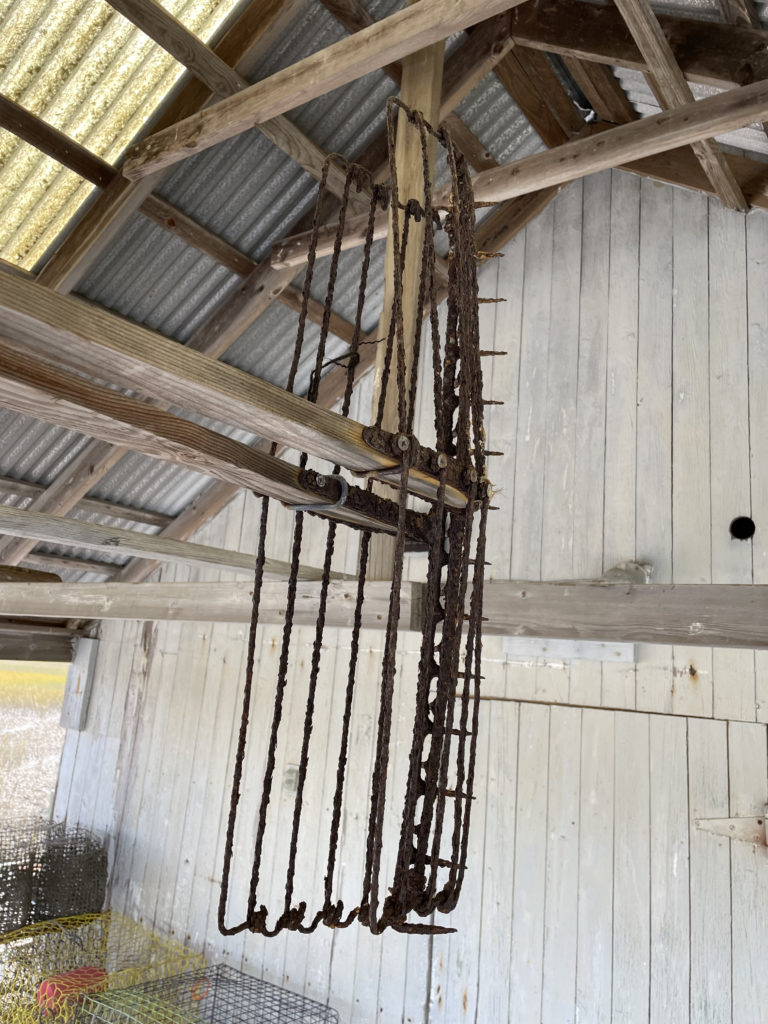
The captain told me his tongs had been his father’s, or maybe his grandfather’s. He had no idea where to get another pair. A quick tour of local hardware stores and watermen’s supply houses yielded just shrugs. Everyone knew what I was asking for, but they had no idea where to get a pair of tongs, new or used.
I came to realize how far removed we are from the days when tonging was a way of life for thousands of Chesapeake Bay families, and when making tongs was a ubiquitous local industry. But I found that with persistence and a little luck, a set of tongs can be assembled, and you too can start gathering your own oysters.
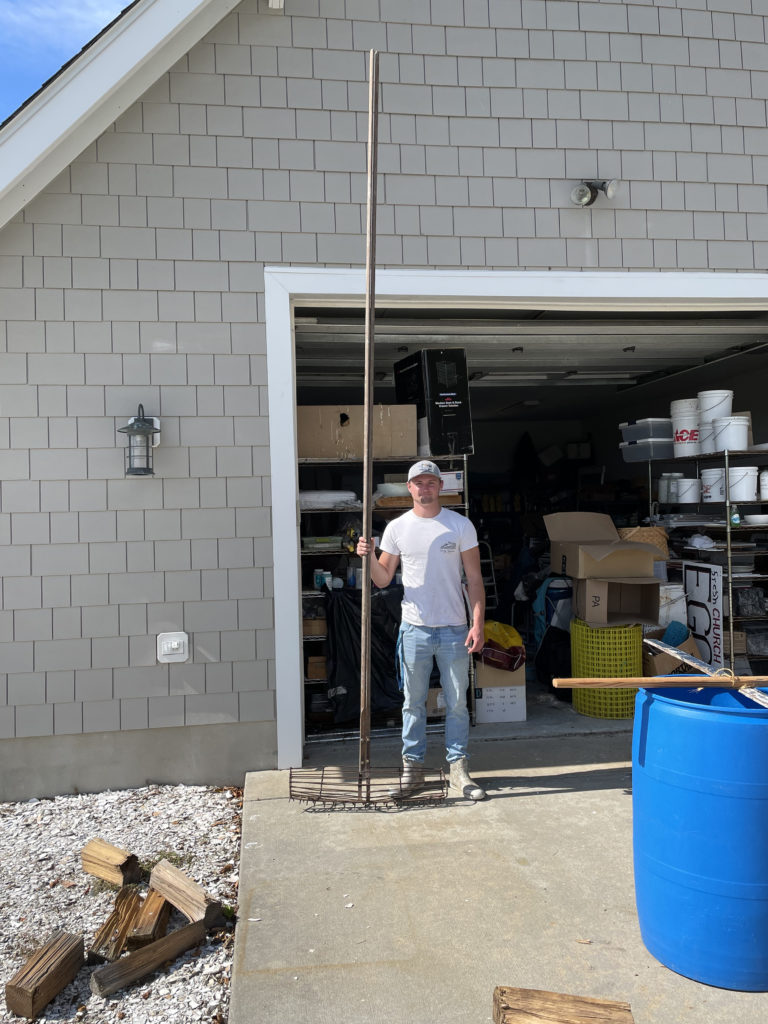
During oystering’s heyday, every Chesapeake blacksmith made oyster tong heads for local watermen. A beautiful example can be found at the Samuel D. Outlaw Blacksmith Shop Memorial Museum, which was owned and operated by a Black man of that name between 1927 and 1991 in the waterfront village of Onancock, Va. During those glory days of oystering, general stores and lumber yards around the Bay advertised the availability of both shafts and lumber especially suited to making shafts, the best being longleaf yellow pine. In 1893, Hopkins Bro. General Store, just down the street from Mr. Outlaw’s shop, advertised, “100 pairs of tong shafts between 14 and 30 feet.”
Lacking a local blacksmith or a waterfront general store, I clearly needed a more creative approach. If this is an antique technology, how about an antiques store? I scoured every antique store on my part of the Eastern Shore of Virginia, but tongs were as scarce as oyster teeth. As I struck out at the last shop, the clerk at the counter asked, “Looking for anything special, hon?” After I explained, she said, “Maybe Bert could help. He is over stocking his booth.”
Paydirt! Bert’s booth was full of old rusty tools. He was enthusiastic. He could get me a pair of the metal tong heads and would charge 45 dollars. Any wooden shafts would be rotted beyond use, though. The following week, as promised, I found a pair of rusty tong heads knotted together with Manila rope hidden at the back of his booth.
Now I needed wooden shafts. Despite their simple appearance, I knew from my time on the tonging boat that the shafts are actually carefully crafted works of art. I could probably make a clumsy pair with some one-by-fours from the lumber yard, but after more than 300 years of documented use in the Chesapeake, the design of traditional tong shafts has evolved to fit their purpose perfectly. They are beautifully tapered, flexible, light and delicate but strong, and a perfect fit in the tonger’s hands.
Searches online and by phone turned up nothing. Could it be that no one made tong shafts anymore? Then, with one phone call, my search for oyster tongs evolved from practical to fascinating to an inspirational trip back into Chesapeake Bay history.
I found a 20-year-old newspaper article about the Messick family of Bivalve, Md. The Messicks have been making tong shafts since 1859, originally as a sideline to their main job of making caskets. The article pointed out that oysters were in decline, few people tonged anymore and the tong shaft business was going the way of buggy whips and whale oil lamps.
I doubted that the business had rebounded in the ensuing two decades and so I was prepared to learn that Messick Brothers had closed shop after nearly 150 years. I called around and found a phone number. Wilbur “Turner” Messick, Jr., the son of one of the men interviewed for the old newspaper article and a fifth-generation tong shaft maker, returned my call. Sure, he’d meet me at the family workshop in Bivalve the following Saturday morning.
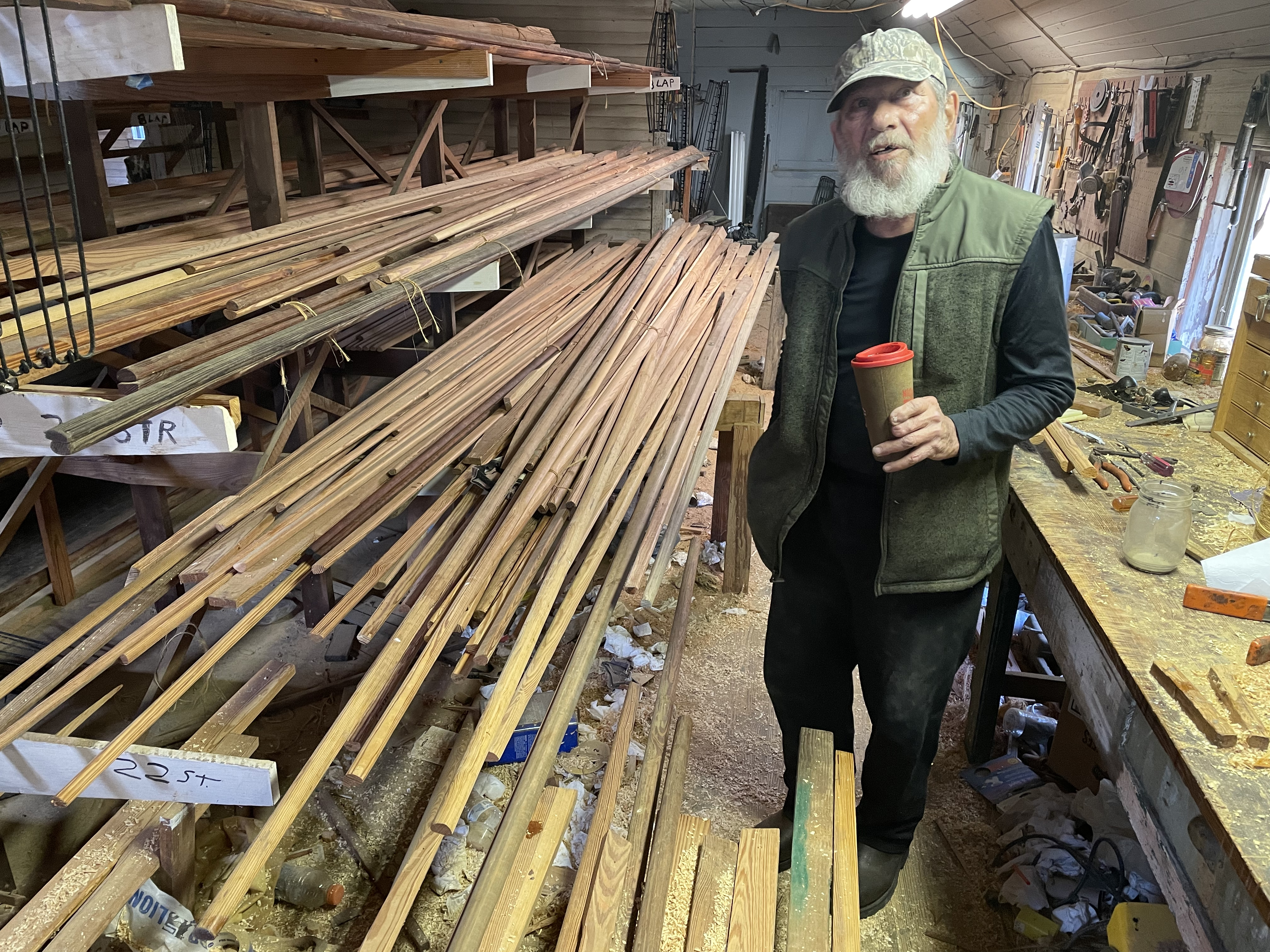
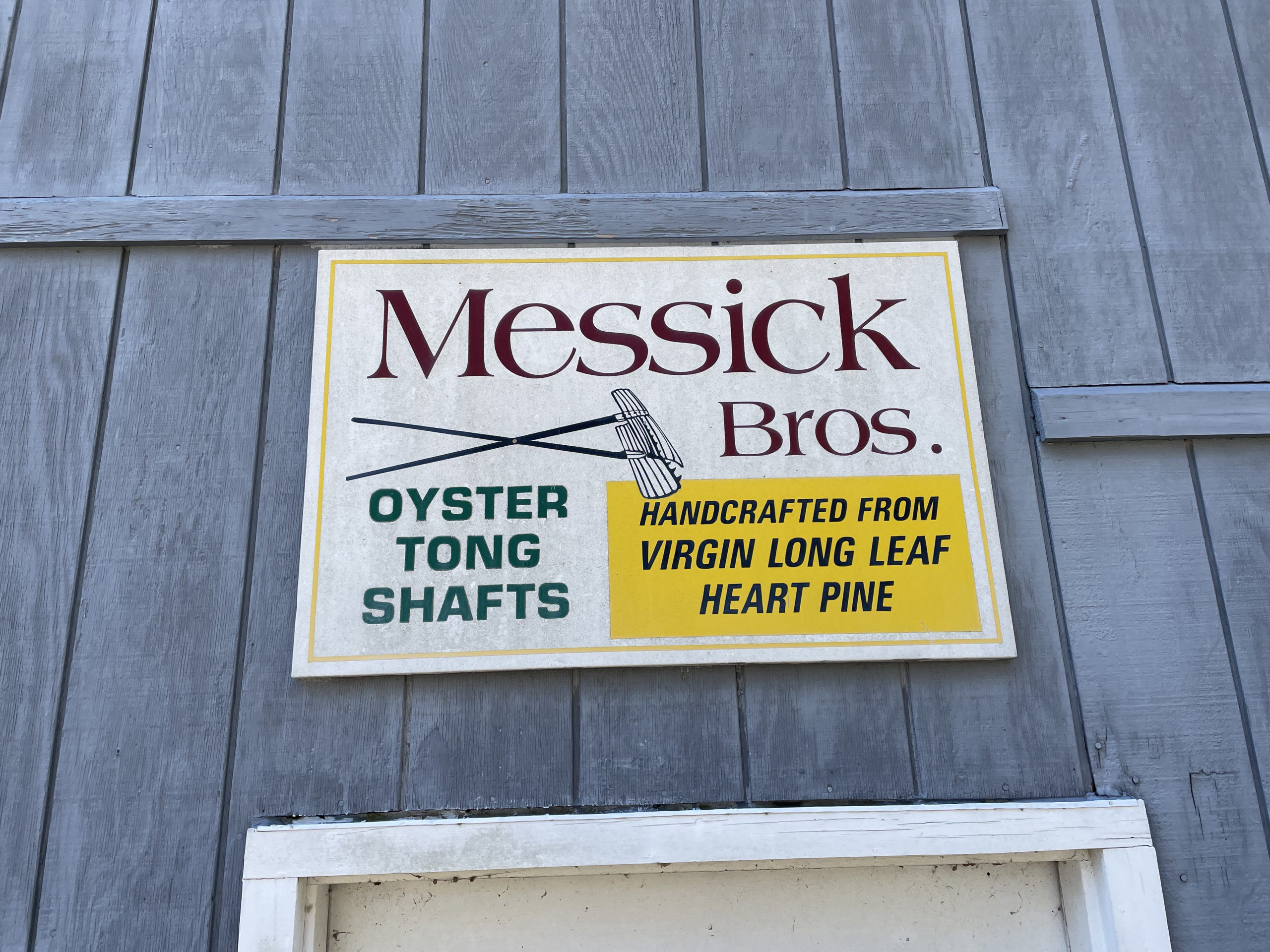
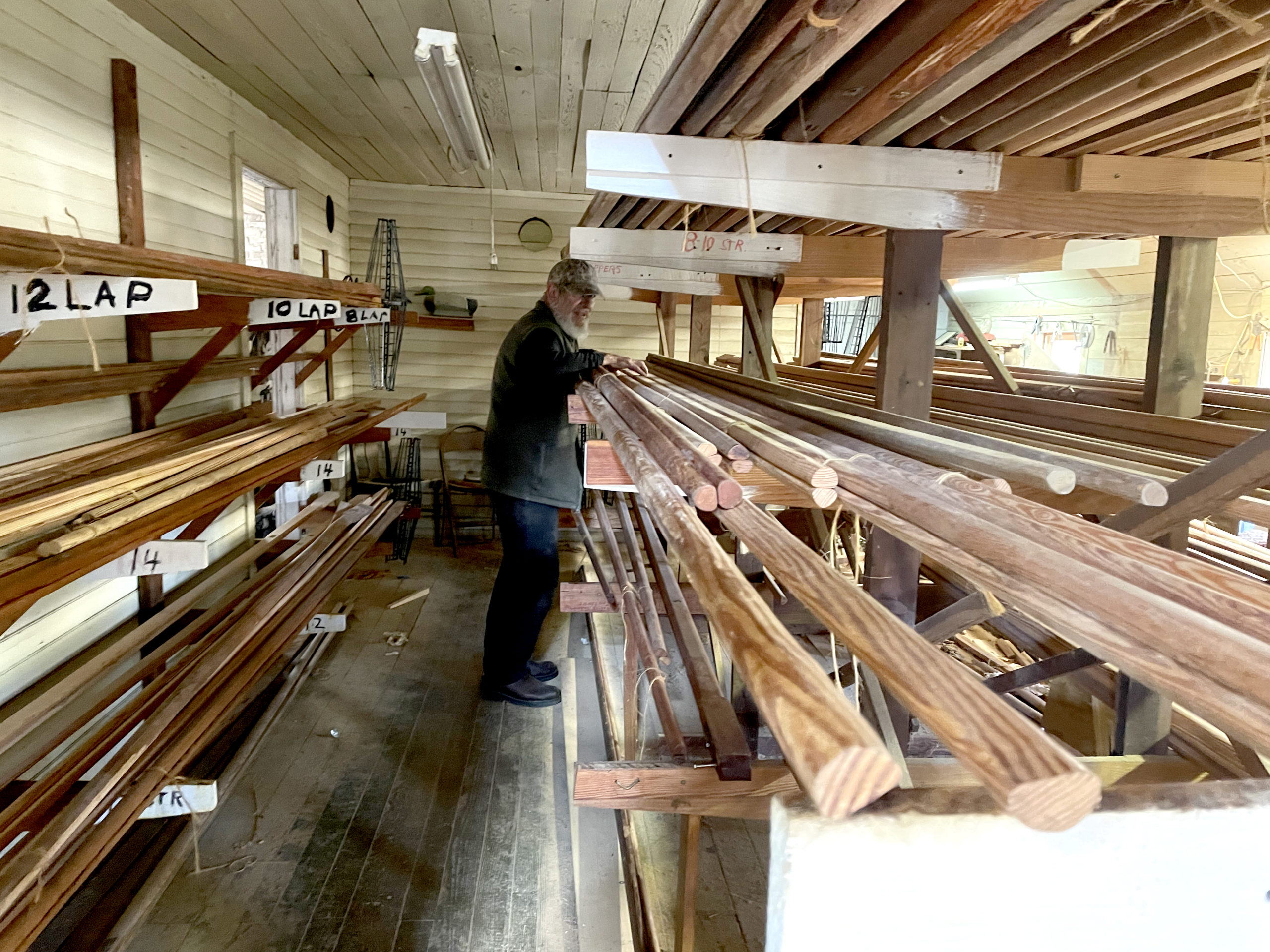
Mr. Messick was very friendly, though a little reserved. He opened the door to the workshop built by his great-grandfather before the Civil War and we stepped back in time. Downstairs, he showed me stacks of sawn longleaf yellow pine, the prime traditional timber for shafts. Upstairs, I marveled at all the ancient tools, piles of scrap lumber and two 30-foot-long workbenches—one with a little trapdoor at the end to allow really long shafts to poke outside—and rack after rack of beautifully finished tong shafts ranging in length from eight to 28 feet, all made by Mr. Messick using the tools, techniques, patterns and skills passed down by his forebears.
Mr. Messick allowed that he had sold only a few pairs of shafts in recent years, but he was ready to supply shafts as soon as tonging on the Bay revived. I bought a pair of twelve footers, light golden in color, emblazoned with a “Messick Bros. Bivalve, MD” brand, and featuring a handmade brass-and-copper pivot. Mr. Messick lowered the shafts down to me through a small second-story door specially designed for that purpose.
Where there were once dozens or perhaps hundreds of tong shaft makers on the Bay, Mr. Messick is very likely the only one who remains with such a direct, unbroken link to the now-distant heyday of the Chesapeake Bay oyster industry. His knowledge, workshop and traditional tong shafts are a regional treasure and the first stop for anyone assembling a set of tongs.
When I arrived home, I bolted the rusted metal heads to the new shafts and, on a bluebird day in March, set out with my friend Buck to tong. Locating oysters is half the battle. The other half is working the tongs, which will give any CrossFit class a run for its money in terms of rapid exhaustion. But we came home with oysters and increasing knowledge about where and how to find more.
Every winter since, I have tonged for oysters at Christmastime and at other times during the season. Using traditional tools in traditional landscapes brings those iconic Chesapeake images to life and increases my appreciation for the craftsmen who made the tongs and the watermen who used them.
In 2022, I assembled another set of tongs. Again, I found a set of metal heads by asking at several antiques stores (this time in Maryland). And more than a decade later, Mr. Messick was still open for business, as gracious as ever, and happy to supply me with a pair of 16-foot shafts and a pair of eight-footers for “nippers.” Business remains slow, but he plans to persevere.
Oyster season is here. If you are a fan of oysters in any of their delicious culinary forms, it’s time to claim your birthright, get some tongs and get out on the water!
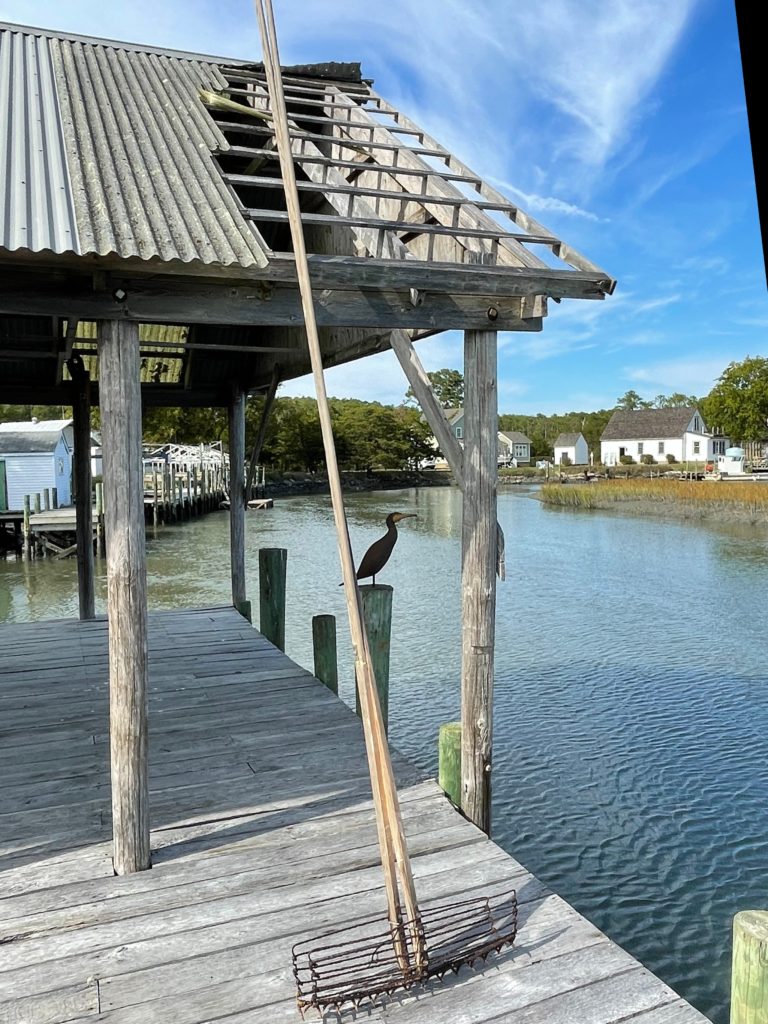
It’s Tonging Time!
If you want to find or assemble your own tongs:
- Messick Bros. Turner Messick, Bivalve, Md.
- Foxwell’s Antiques & Collectibles Easton, Md. 410-820-9705
- Blue Crow Antique Mall Painter, Va. 757-442-4150
- James E. Harvey Millwork, Inc. Bozman, Md. Tong shafts in the traditional style.
- Hogge Seafood, LLC Elberon, Va. Tong heads and shafts, clam rakes and assorted oyster and clam harvesting gear. 757-294-9091.

